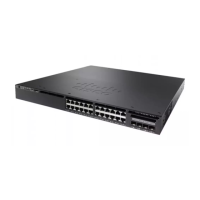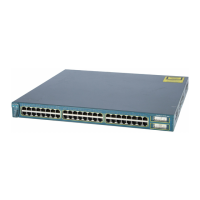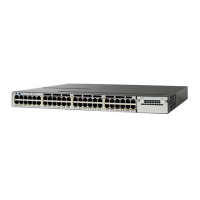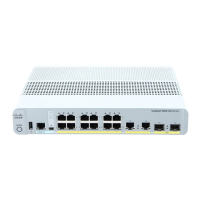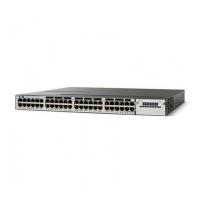Restrictions for Configuring Wireless Multicast
The following are the restrictions for configuring IP multicast routing:
•
Access points in monitor mode, sniffer mode, or rogue detector mode do not join the CAPWAP multicast
group address.
•
The CAPWAP multicast group configured on the should be different for different devices.
•
Multicast routing should not be enabled for the management interface.
Information About Wireless Multicast
If the network supports packet multicasting, the multicast method that the device uses can be configured. The
device performs multicasting in two modes:
• Unicast mode—The device unicasts every multicast packet to every access point associated to the device.
This mode is inefficient but might be required on networks that do not support multicasting.
• Multicast mode—The device sends multicast packets to a CAPWAP multicast group. This method
reduces overhead on the device processor and shifts the work of packet replication to the network, which
is much more efficient than the unicast method.
When the multicast mode is enabled and the device receives a multicast packet from the wired LAN, the
device encapsulates the packet using CAPWAP and forwards the packet to the CAPWAP multicast group
address. The device always uses the management VLAN for sending multicast packets. Access points in the
multicast group receive the packet and forward it to all the BSSIDs mapped to the VLAN on which clients
receive multicast traffic.
The device supports all the capabilities of v1 including Multicast Listener Discovery (MLD) v1 snooping but
the v2 and v3 capabilities are limited. This feature keeps track of and delivers IPv6 multicast flows to the
clients that request them. To support IPv6 multicast, global multicast mode should be enabled.
Internet Group Management Protocol (IGMP) snooping is introduced to better direct multicast packets. When
this feature is enabled, the device snooping gathers IGMP reports from the clients, processes them, creates
unique multicast group IDs (MGIDs) based on the Layer 3 multicast address and the VLAN number, and
sends the IGMP reports to the IGMP querier. The device then updates the access point MGID table on the
access point with the client MAC address. When the device receives multicast traffic for a particular multicast
group, it forwards it to all the access points, but only those access points that have active clients listening or
subscribed to that multicast group send multicast traffic on that particular WLAN. IP packets are forwarded
with an MGID that is unique for an ingress VLAN and the destination multicast group. Layer 2 multicast
packets are forwarded with an MGID that is unique for the ingress VLAN.
MGID is a 14-bit value filled in the 16-bit reserved field of wireless information in CAPWAP header. The
remaining 2 bits should be set to zero.
Related Topics
Configuring Wireless Multicast-MCMC Mode (CLI), on page 217
Configuring Wireless Multicast-MCUC Mode (CLI), on page 218
IP Multicast Routing Configuration Guide, Cisco IOS XE Release 3SE (Catalyst 3650 Switches)
216 OL-29890-01
Configuring Wireless Multicast
Restrictions for Configuring Wireless Multicast
